Godzilla Minus One: Life, Death, and Yukio Mishima
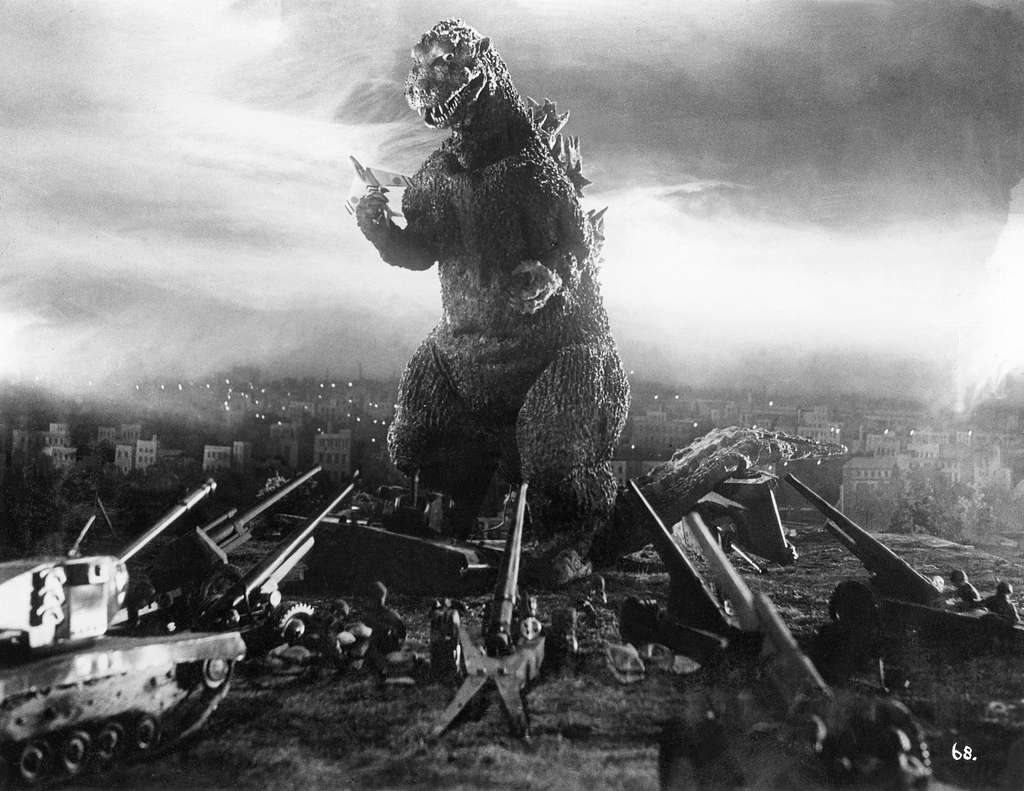
I’m a little late in publishing this piece. With Christmas, New Year’s, and some continuing work on my book (the one on intelligent design), I had to push my bimonthly article back a week in order to accommodate everything.
Before Christmas, my cousin Nick came to visit Durham, NC, where I live. And since he’s a huge Godzilla fan, we went to go see Godzilla Minus One. It was the first time I’d seen a Godzilla movie since the 2014 American film.
As a kid, I loved the series and watched as many of them as I could find on the shelves of the local Blockbuster—usually silly, monster-of-the-week type things with a man in a rubber suit doing battle with another foam monster-man. As anyone who’s seen them knows, most Godzilla movies are the platonic form of cheesy entertainment.
For those who haven’t seen it, feast your eyes upon this—the greatest action scene in film history:
What’s lost in all the silliness of (many) of the movies is that the original Godzilla (1954) was a much more serious film, representative of Japanese cinema’s struggle to reckon with defeat in WWII and the all-too-real experience of nuclear annihilation.
I remember when I first saw it; as a 10-year-old kid expecting another campy monster battle like the one above, it actually scared me. The oxygen destroyer was the stuff of nightmares. I still vividly remember the scene where the device is demonstrated, suffocating a group of fish in a tank and then liquefying them.
Rather different than the flying kick from Godzilla vs. Megalon. And yet, it should be frightening—after all, it is clearly representative of the newfound, terrible power of nuclear weapons.
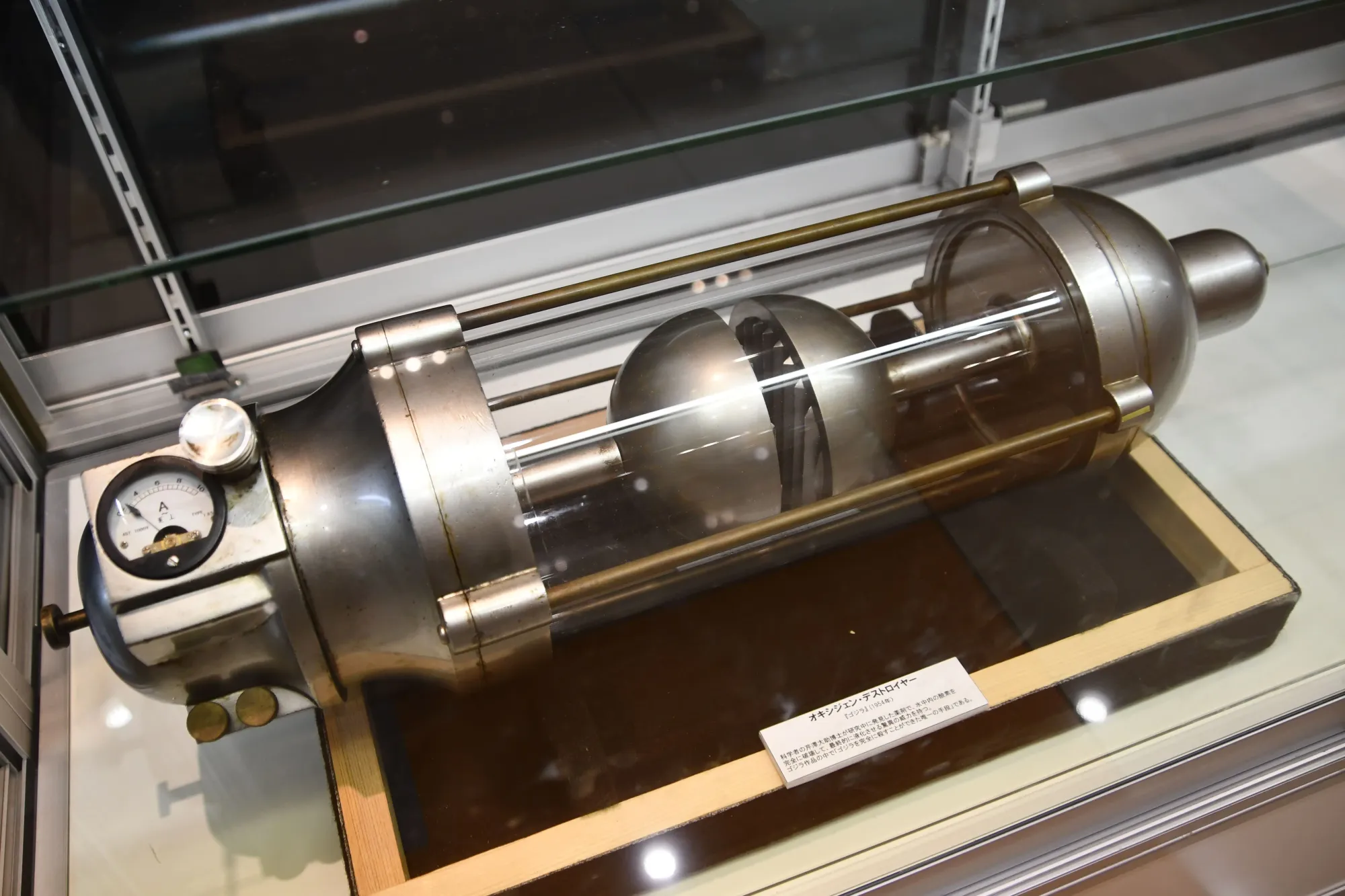
Godzilla Minus One
That brings me back to Minus One. As a sort of “soft remake” (or perhaps more generously, an homage) of the first film, it takes place shortly after WWII. And, like the original, it is a more serious and critically introspective take on both Godzilla and modern Japan. (It is not, of course, the only serious Godzilla movie—Shin Godzilla and The Return of Godzilla come to mind).
Where most monster movies fail—at least the ones that view themselves as having something to say—is in the human story. Godzilla is never really on screen that much, even in the campier iterations. The story stands or falls with the human drama. In the American Godzilla (2014), this was one of its failures, as the human plotline felt rather thin and uninteresting, which meant the fantastic vistas of war-torn San Fransisco felt more like window dressing than emotionally resonant commentary.
Godzilla Minus One is far stronger in this regard. It focuses on the plight of Kōichi Shikishima, a disgraced kamikaze pilot who—in the beginning of the movie—abandons his duty and flees from battle, landing at a garrison on Odo Island and lying that his plane was faulty in order to cover for his dereliction. A smaller, local incarnation of Godzilla appears on the island that night, and as the mechanics plead for Kōichi to help them with his plane, he freezes up and allows them to all be killed.
He is wracked by survivor’s guilt and shame over his own cowardice. His sense of unworthiness and failure is driven deep into his psyche by the fury of the Island’s lone other survivor, Tachibana, who blames Kōichi for the squads’ deaths. When he arrives back in Japan and wanders through the obliterated ruins of firebombed Tokyo, an older woman berates him for surviving, too. “If you had just done your job!” she screams at him (paraphrasing here as I only saw the movie in theater and don’t have access to it right now).
But as Kōichi tries to cobble together some semblance of life again, including assisting a young woman named Noriko and an abandoned baby that was left with her, nuclear testing continues, and bombs are detonated at the Bikini Atoll. As anyone who has seen a Godzilla movie knows, the newly irradiated King of the Monsters is about to return in far greater size and terror.
But as I watched the movie, I could not help but think of a controversial—to put it lightly—figure in modern Japanese history: the fascinating, horrifying, charismatic, and repulsive Yukio Mishima.
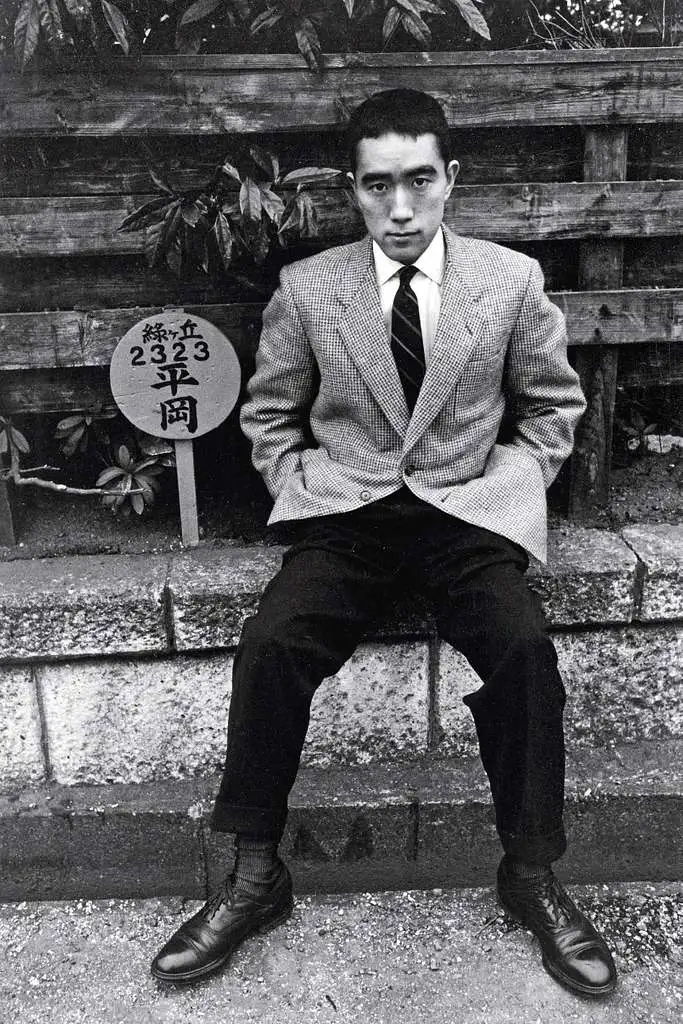
The Shocking Life and Death of Yukio Mishima
Mishima is a frankly disturbing individual. I am hardly alone in feeling this way about him—and it’s for good reason. Simply searching for his strange, fascistic memoir Sun and Steel on Amazon brings up a whole rogue’s gallery of horrors in the “customers also bought” category: Ernst Junger’s The Storm of Steel, Julius Evola’s Revolt Against the Modern World, and the Unabomber manifesto (I’m sure, if I kept looking, the Bronze Age Pervert would make an appearance). It’s a good way to end up on an FBI watchlist.
Mishima’s life was incredibly dramatic. Like Kōichi Shikishima, he harbored a deep guilt for his inability to serve in World War II. Mishima (whose name was Kimitake Hiraoka, before he took his famous pen name) was declared unfit for service due to ill health. In the unique biopic of his life—Mishima: A Life in Four Chapters directed by Paul Schrader (of Taxi Driver and First Reformed fame)—Mishima exaggerates his illness in order to avoid fighting. His shame about this drove him throughout his life. Alongside this, and the movie demonstrates this too, Mishima was gay, and he wrestled with this part of himself in fiction—becoming one of Japan’s most well-known novelists, even getting consideration for the Nobel Prize in Literature.
Whereas art was one venue for Mishima to work out his identity, another was bodybuilding. Mishima embarked on an extreme gym regimen and became known as a muscle-bound fitness guru and model, in addition to a writer. His difficult breakthrough relationship to his own body was chronicled in his posthumous memoir-of-sorts Sun and Steel, a meditation on art, words, and weightlifting.
Posthumous is a key word here. For, in addition to his writing and weight training, Mishima is notorious for being the last person to commit seppuku.
In 1970, Mishima had by that time accrued a number of followers in his quasi-military Shield Society. His nationalist/fascist/anti-modern ideology appealed to others who were disaffected by the strictures and failures of western-style liberal democracy (I realize this is vastly oversimplifying things). That day, Mishima planned to go out with a literal blaze of glory. With a few members of the Shield Society, Mishima sieged and barricaded himself inside the Eastern Command headquarters of the Japanese Self-Defense Force and gave an impassioned, rooftop speech about the evils of liberalism and capitalism, and warned that Japan had lost its way. He was mostly booed and harassed by the people outside. After the speech he went back inside and committed ritual suicide.
It is very difficult to understand Mishima—this goes for those in and outside of Japan. As Paul Schrader said in an interview with Dick Cavett, “We have a tendency to say we can’t understand Mishima because we’re Americans; believe me, the Japanese do not understand him either. He is as unfathomable to them; perhaps more so because they feel they should understand him.”
But Mishima can’t be ignored or dismissed, as much as we probably would like to. The reason is that he has seemingly touched on some kind of raw nerve, a sort of virulent rage at the nihilism of modern western liberalism. Simply ignoring it would open the doors for disaffected young men to start turning towards these (literally) self-destructive philosophies. An alternative must be presented. I think this is, in part, what Godzilla Minus One is trying to do.
But what is the substance of Mishima’s views—what is it about Sun and Steel, in particular, that must be refuted?
Sun and Steel
Mishima wrote that he did not qualify for service in World War II. He was, he admits, unsuited to an early death. “Longing at eighteen for an early demise, I felt myself unfitted for it.” There was a strong will and appeal, “I cherished a romantic impulse towards death,” but felt that his body was not yet ready for it—hence, paradoxically, he needed to embark on a grueling regimen of exercise and weightlifting. But underneath it all is a will to death, to destruction. “The romantic impulse that had formed an undercurrent in me from boyhood on...made sense only as the destruction of classical perfection.” He would need to attain physical perfection and then destroy it.
Death is the ultimate enemy. But Mishima sought to master it and make it his own. The combination of violent death and muscle that is combined in seppuku made it a method to master one’s inevitable mortality. And death, itself, Mishima found salvific: for it gave “tragic identity.” He sought for a realm, a higher realm where body and spirit could be fused, where intellect and action could be made one. “Somewhere, I told myself,” he concludes in Sun and Steel, “there must be a higher principle that manages to bring the two together and reconcile them. That principle, it occurred to me, was death.” And not just mystical or spiritual, but physical death too.
Mishima didn’t want an ordinary life—he wanted one of glory and battle. He wanted to be memorialized as a great, tragic hero. He seems to have achieved this.
One can perhaps sympathize and understand a bit of drive (if not the fixation on death). It is a familiar feeling, for those of us living in the desiccated world of late modernity, full of shopping malls and suburbs and endless advertisements. A common question I’d get from my undergrad students, as they stand at the precipice of their graduation and careers, is that the world is rather boring. “Is this it?” they ask, as they get ready to work for 50 years and then—if they’re lucky—retire.
Embed from Getty Images. Mishima's speech shortly before his death.
If all Mishima was doing was chafing against the emptiness of technocratic modernity then he would not be so dangerous. But he went further, he found an answer in what can only be described as fascism.
Some of his fascism is obvious (hatred of the liberal democratic government, for one, and his paramilitary society), but some is a bit more subtle. Take, for instance, the submergence of the self into a national unity, made anonymous by uniforms—an effect he praises; “having concerned myself from the outset of my literary life with methods for concealing rather than revealing myself, I marveled at the function of the uniform in the army.” Furthermore, uniforms do not fit “a scrawny body or a protruding belly.” (One sees fascism as aestheticism here, a mainstay of its philosophy and which has reared its ugly head again on the internet with the so-called “physiognomy checks,” something Mishima occasionally participates in as well).
Take, also, the essential anti-liberalism in his views of other people. They are, he felt, essentially unknowable. Liberal politics is based on the universalization of humanity—the idea that across cultures, boundaries, and even religions, people are fundamentally the same and capable of reasoning and compromising together for mutual benefit. Mishima questioned the reality of this belief. In trying to really understand how the “native of another country experiences existence” we are stuck only being able to:
apply inclusive, abstract concepts such as mankind, universal humanity, and so on, and to make deductions using these hypothetical yardsticks. This, however, is not an exact knowledge, but a method that leaves the ultimately unknowable elements untouched and deduces by analogy with the other, shared elements.
A non-violent, non-coercive, and coalition-based politics (of the kind that liberalism at least pays lip service to, even if it cannot live up to it) is rather ruled out here. The difference is too great, too fundamental. Knowledge of the political Other can be approximated but never truly achieved.
And, furthermore, there is the need for an enemy. As Mishima wrote of his bodybuilding:
in order to make the action exist unequivocally, a hypothetical enemy outside the muscles is necessary, and for the hypothetical enemy to make certain of its existence it must deal a blow to the realm of the senses fierce enough to silence the querulous complaints of self-awareness.
This gets a little less metaphorical when Mishima discusses the knife of the enemy. “Blood flows, existence is destroyed, and the shattered senses give existence as a whole its first endorsement, closing the logical gap between seeing and existing.”
The absolute need for an enemy is critical to fascist political philosophy. As the German fascist and jurist Carl Schmitt argued in The Concept of the Political, the “friend-enemy” distinction is a pillar of its thought. There is an irreducible distinction between friends and enemies, made inevitable by differences of identity and practice (something that liberalism falsely, in his view, waves away with its “neutral” or “utopian” premises). Mishima didn’t target a particular ethnic group or minority as the enemy one must array oneself against in order to live, but there is certainly a compatibility of thought, a dangerous road to start traveling.
But all of that resolved as Mishima met and subdued his own enemy: death.
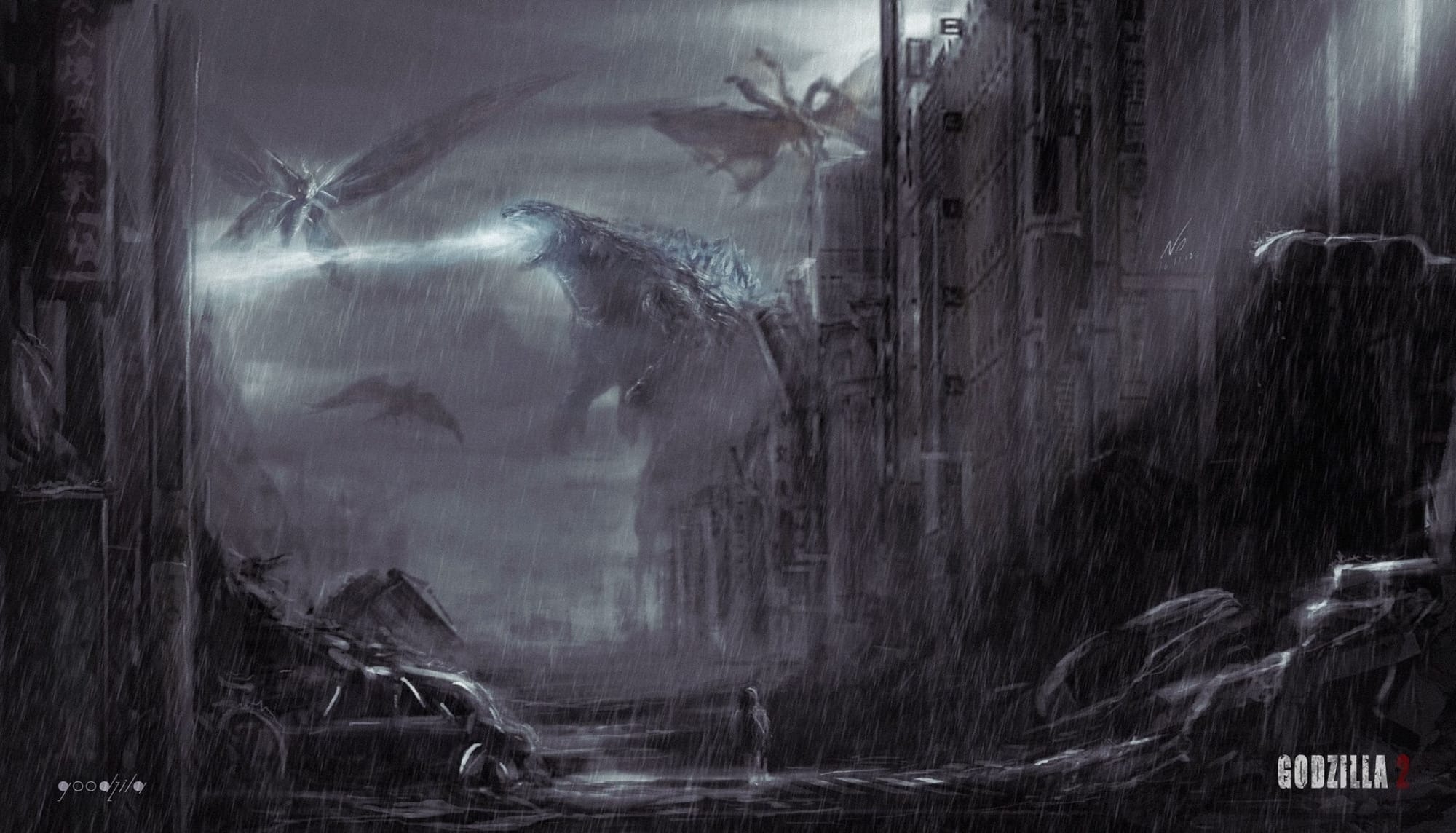
Godzilla Minus One's Rebuttal of Mishima
The rejection of this heroic death (with fascist aesthetic of the annihilation of a cultivated body at the height of its powers), is central to Godzilla Minus One. As Kōichi Shikishima, the ex-kamikaze protagonist, puts his life back together, he works for a wooden minesweeper outside Tokyo. The crew of the ship (minus one) are all veterans of World War II, and do not hold any romantic nostalgia for the conflict.
In fact, for Minus One, the warrior’s death—particularly the sacrificial one—is rather pointless. It achieves nothing except prolonging violence. It is not glorious; it is a lie. It is, as Wilfred Owen wrote about World War I:
Obscene as cancer,
Bitter as the cud
Of vile, incurable sores on innocent tongues,–
My friend, you would not tell with such high zest
To children ardent for some desperate glory,
The old Lie: Dulce et decorum est
Pro patria mori.
Only someone who did not know war would valorize it so. In Minus One, there is a secondary character named Shirō Mizushima who is the only one of the main cast that did not fight. He is young and idealistic; he wishes that he had. In fact, in another time, he might be someone who would be susceptible to Mishima’s ideas and charisma. Mizushima feels shame for not having fought. At one point he begs to be included in a dangerous mission because he wants to put his life on the line like they did in the war. But his compatriots tell him that “you should be proud of never having fought in war.”
Altogether, the real drama is in Kōichi Shikishima’s arc. As Godzilla emerges from the depths, fully formed and wielding his atomic breath, he descends upon Tokyo and ravages the Ginza district. In the aftermath, the people feel abandoned by the government and its inability to do anything to stop Godzilla (despite its anti-war and anti-fascist tone, Minus One is hardly a celebrant of post-war liberal democracy either, which it depicts as feckless and disinterested in the lives of its people; rather, the movie favors a local, cooperative community approach to politics).
So, they come together—ex-soldiers, citizens, scientists, and more—to come up with a plan. There are two. One is to follow a scientist’s plan to kill Godzilla via a trap that will trigger uncontrolled decompression. The other, secretly, is Kōichi’s.
He will outfit a plane with bombs and crash it into Godzilla, killing the monster and himself in the process, atoning for his sins in a cathartic and heroic sacrifice that will wipe away the stain of his previous cowardice. He even consults the mechanic from Odo Island, Tachibana, who (after berating Kōichi for his failings) agrees to help plan the suicide mission.
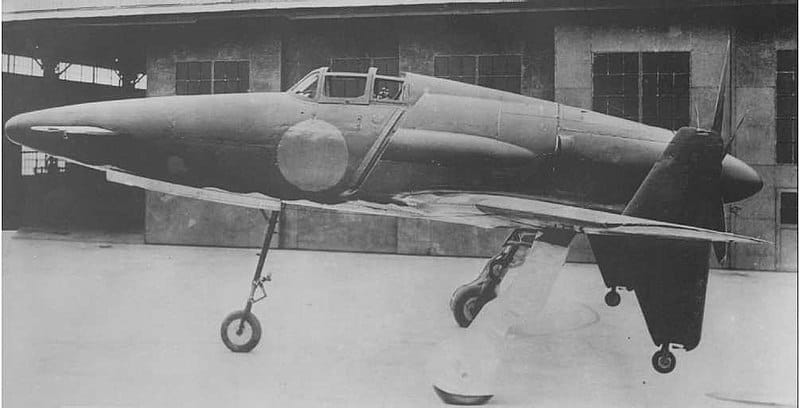
There is an interesting congruence in the subsequent plane flight. As Godzilla Minus One ends with its main character flying through the air in an experimental aircraft, so does Sun and Steel.
In the book’s coda, Mishima takes flight in a two-seater fighter jet and has a mystical experience. It is as he flies, high above the clouds, that he feels time grinds to a stop—that all eternity can be felt in this single instant—and that it simulates death in its timeless single point. “This was the point that I had been striving towards,” he writes.
Paul Schrader captures this beautifully in Mishima: A Life in Four Chapters, showing in black-and-white the ecstatic reverie Mishima experiences as the plane raises above the earth. In his book The Transcendental Style in Film, Schrader argued that there is a kind of filmmaking that can be called “time-image,” where filmmakers “understood they could slow movies down to create a new reality, to explore memory, to beget contemplation, and in some rare cases simulate transcendence.” It is slightly ironic that despite writing the book on transcendental cinema, Schrader never really made his own movie in that genre (but in this scene he comes close).
There is, however, one small detail I couldn’t help but notice: one fly in the ointment of Mishima’s meditation on the timeless eternity of the moment and his embrace of death. He looks down, and “beneath my knees rested the yellow ring of the ejection equipment, its pin already out.” In the midst of his rapturous experience and simulation of the eternity of death, there is a reminder of life: pull this, and live.
In Godzilla Minus One, as Kōichi flies to make his suicide run, there is a flashback to his conversation with Tachibana. He recalls it as the scientist’s plan fails, as Godzilla lives through the decompression trap. Tachibana, despite hating Kōichi for Odo Island, nevertheless points to the ejection equipment and gives Kōichi a one-word command that undoes the fascistic death cult: “live.”
As Godzilla stands in the water, ready to destroy the ragtag fleet of ships the citizens of Japan have used to stop him, Kōichi’s plane rockets over the water and slams into his mouth. There is shock and dismay from all who see it—suddenly horrified that Kōichi might have died in a last-gasp effort to defeat the monster. But Minus One’s entire thematic thrust has been of the triumph of life over death. And so they see, in the distance, the billowy white of Kōichi’s parachute.

Life Itself
There is, of course, more to say here, but this article is already getting longer than I intended. The defense of life over glorified war-death in Godzilla Minus One is not enough on its own: after all, the empty nihilism of modernity is still a problem. Is living just enough on its own? Few think so. The sci-fi writer Gene Wolfe once contended in an interview that life is “an end, not a means.” And, being a Catholic, Wolfe felt that life was a means too—but one that should be preserved and affirmed for its own sake, not one that was simply a road to death or some hereafter. After all, is not the point to have life, “and have it more abundantly”?
But what I appreciated about Godzilla Minus One was that it took up this issue and tried to highlight another path. We are living in a moment, in contemporary societies throughout the world, in which the emptiness of modernity is pushing people to extreme responses (some of them to figures like Mishima). Godzilla Minus One should be commended for its attempt to meet this challenge head on and articulate an alternative. Would that all action movies were enlivened by such a spark of conviction.
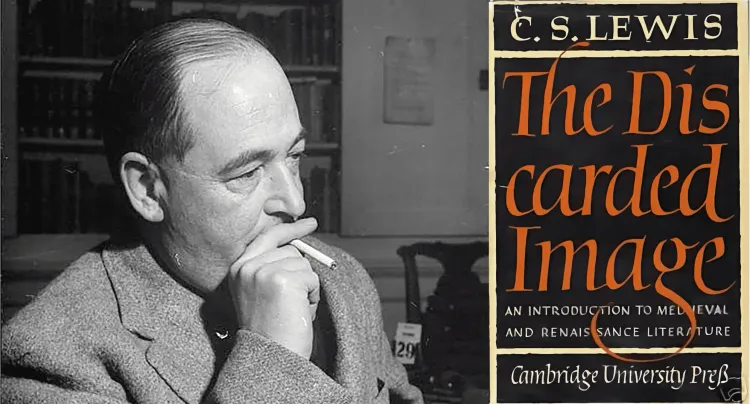
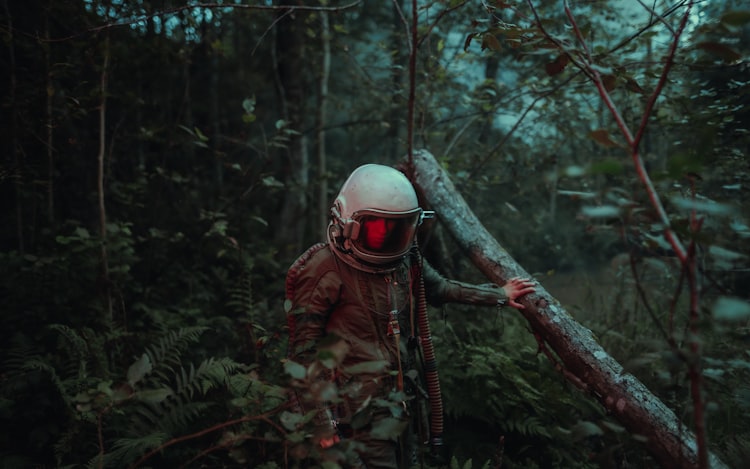
Member discussion